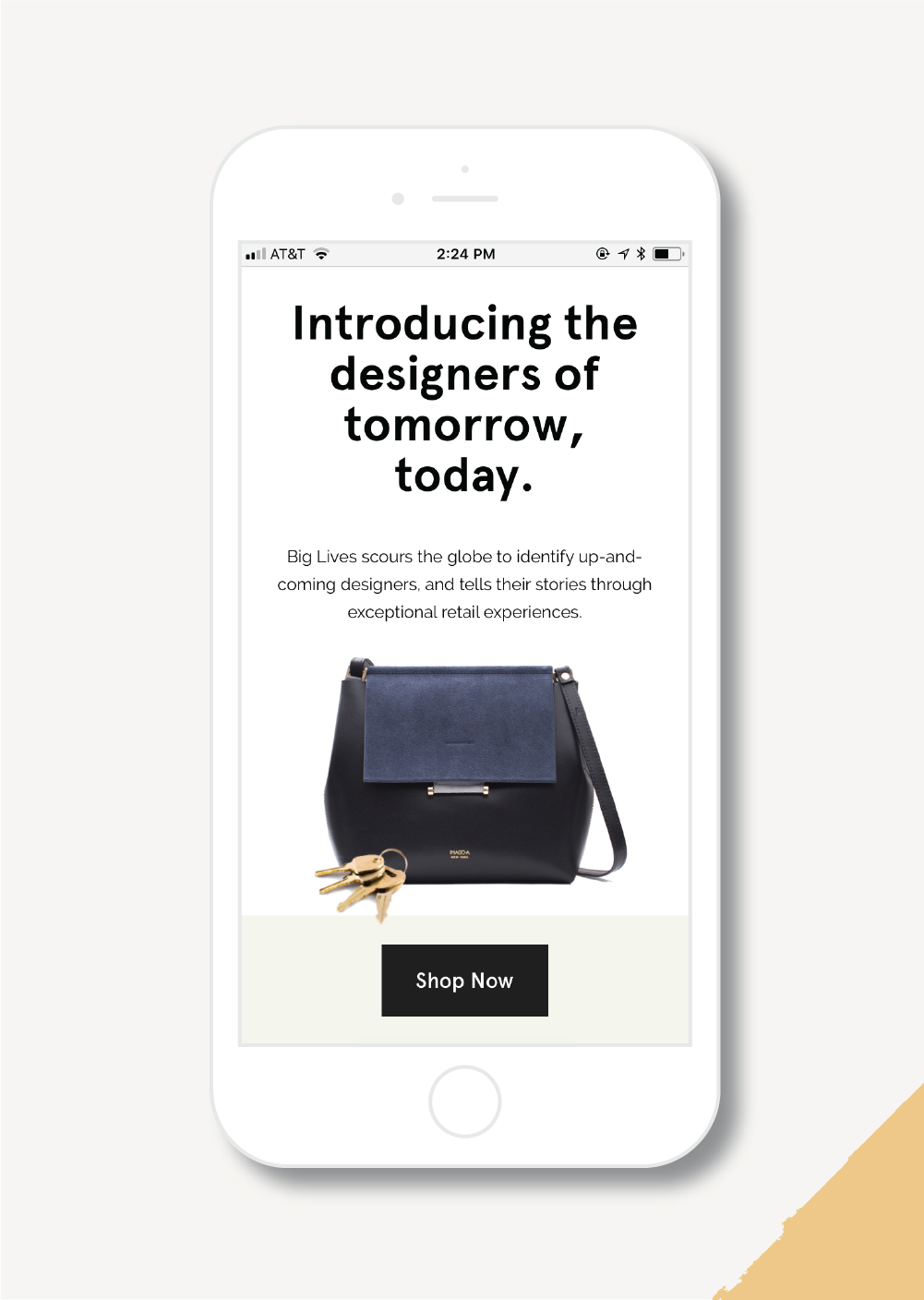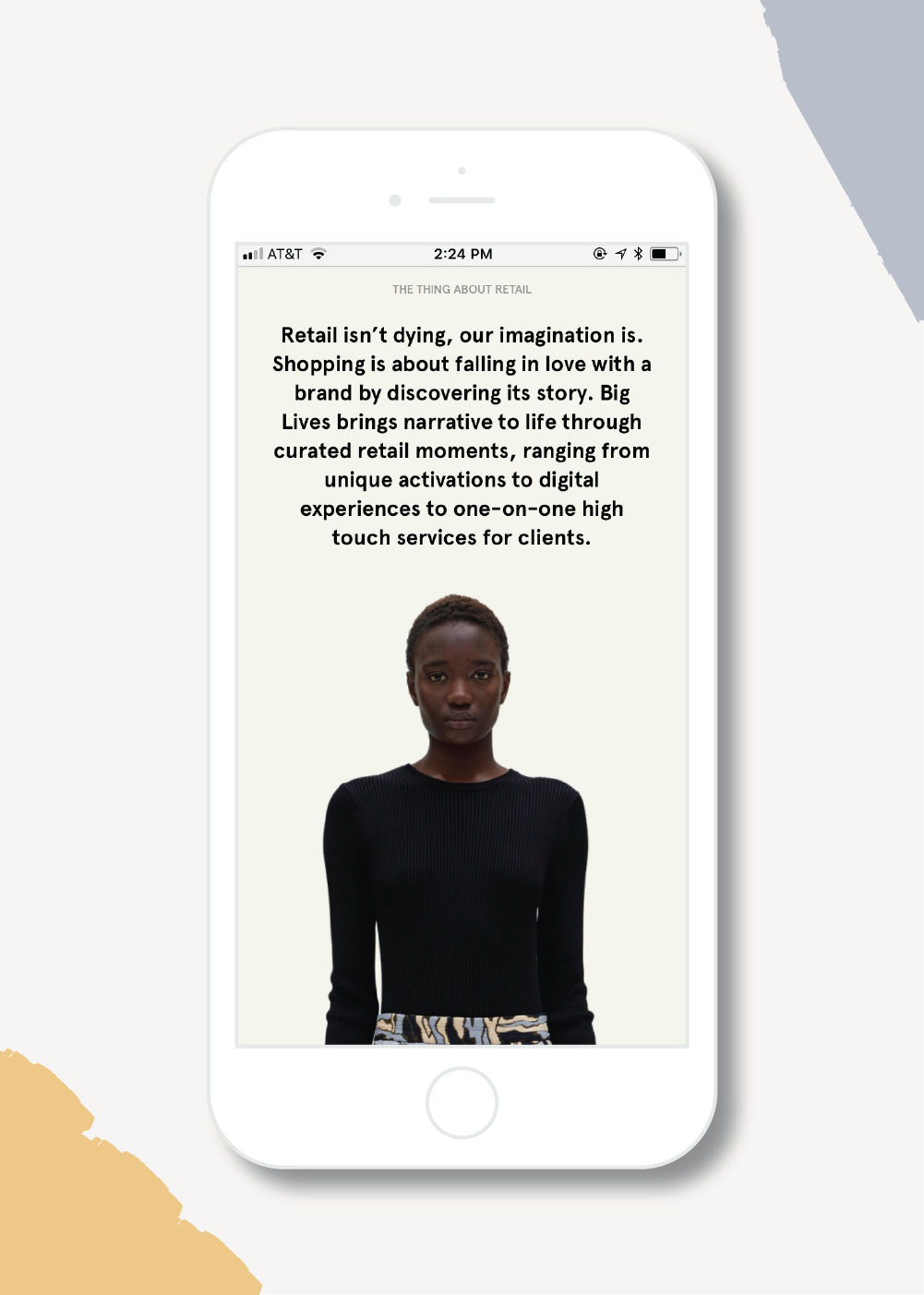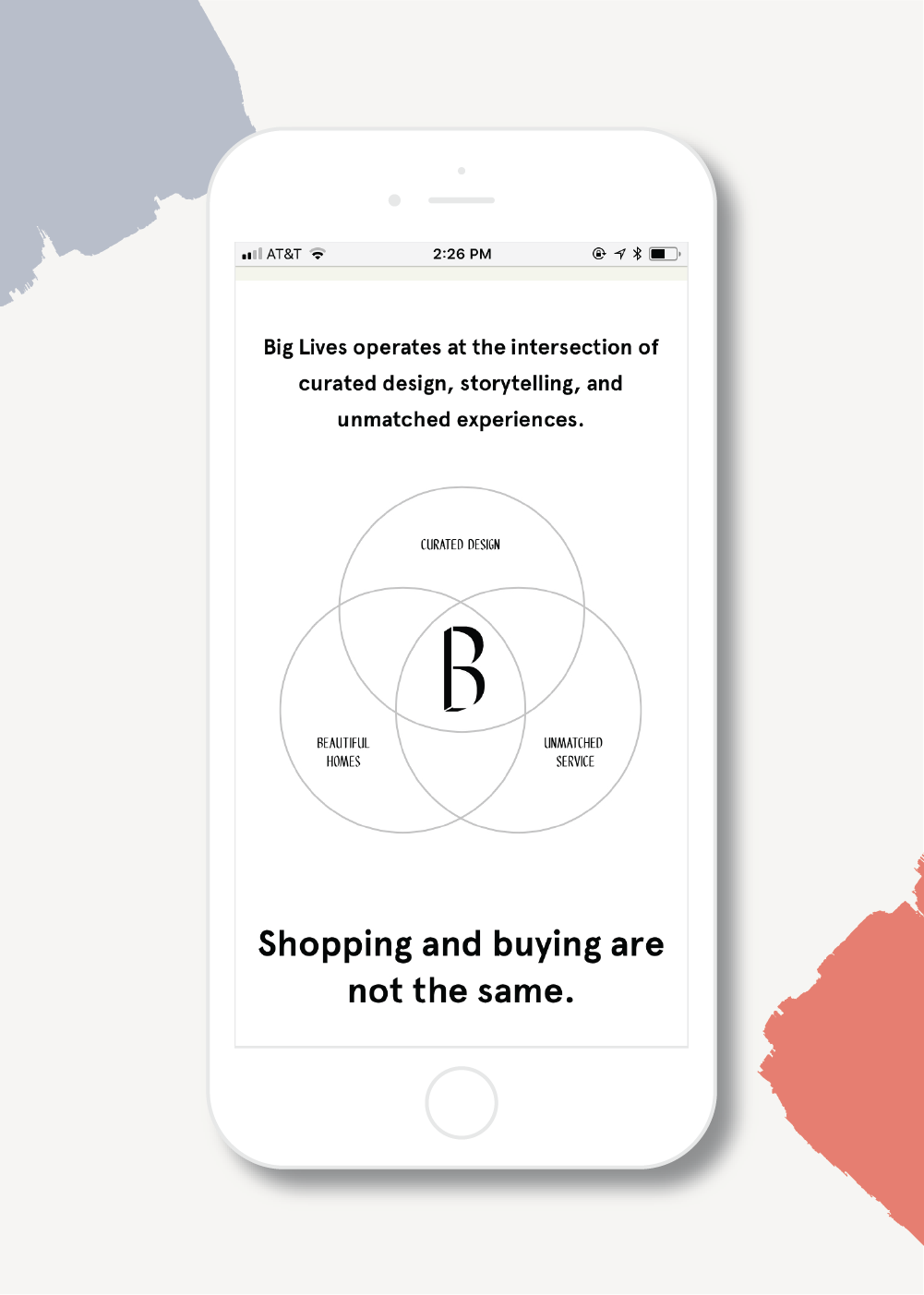How this Founder and Former Louis Vuitton Executive is Reenvisioning Retail
Sam Alston is the founder of Big Lives, an experiential retail platform that replaces traditional brick-and-mortar and e-commerce with curated, retail events in homes and unique spaces.
Alston dreamed of opening a store since she was kid, and finally took the leap in 2017 to start Big Lives after ten years working in corporate fashion for brands like Urban Outfitters and Louis Vuitton. Alston’s mission is to cultivate up-and-coming designers, connect them to customers in a meaningful way and bring delight and discovery back to shopping.
From hosting the first Big Lives experience in her own Brooklyn home in November 2017, to the most recent experience at a Romanesque revival home in Brooklyn, in partnership with Australian real-estate developer Dixon Projects, Anthropologie and local wine shop Bed Vyne, and with attendees tripling from the previous five events, it’s clear Big Lives is onto something.
Alston shared with me how she’s reenvisioning retail, how she mustered up the courage to leave the corporate world, her perspective on consumerism, the challenges of getting to market fit, and more.
Below is a condensed version of our conversation.
Gilbert: What’s your perspective on consumerism?
Alston: I constantly question what it means to perpetuate the fashion industry. One side of it is by definition materialistic and excessive. Another side is about art and innovation, self-expression, influence, and empowerment of identity.
On a personal level, as a mixed-race child of the 80s in Seattle, fashion soothed my search for identity. I developed a unique and intuitive sense of style. It helped me embrace my difference as a rare brown kid in the class, and find my voice as an introvert. I developed a joy in self-expression through clothing. Something that excites me today is when I see young people from every walk of life take pride in how they get dressed, and step out. Style can feel so powerful to the beholder, which is all that really matters.
-
Gilbert: What was the most challenging part of getting Big Lives started?
Alston: The biggest challenge in getting started was feeling prepared “enough” to take the leap and leave my career trajectory, while accepting I would never feel fully ready.
In March 2017, while still at Louis Vuitton I joined Tacklebox, a startup accelerator that helps entrepreneurs with full time jobs design early-stage businesses. One aspect of the program involved pitching to investors to gather feedback on our concept and how we presented.
A critical moment for me was when Angela Lee of 37 Angels hosted a session. A fellow founder asked her: how do you know when it’s time to leave your job? Her answer: you need to do the math. For me, this meant confronting exactly how much I was willing to personally invest to make the business real, and based on a financial model, how much time that would give me to make it successful.
Deep down I knew this was true, that I needed to do this, but I had been procrastinating based on a serious fear of failure. I went home that night and crunched the completely theoretical numbers, knowing I was committed to bootstrapping so that I could have the freedom of being accountable only to myself and my customers. That exercise identified a runway, which gave birth to a resignation date.
-
Gilbert: What’s been the most difficult about getting to market fit?
Alston: How to message a completely new concept. Our business model is challenging every aspect of traditional retail: what is a store? What is merchandising, or inventory? What is shopping? It’s a crazy process.
One of the biggest learnings I’ve discovered is how language confines us. When we first launched and I would describe Big Lives to folks who hadn’t yet attended an event, they would say: Ah, it’s like a tupperware party! Or: Oh, you put on trunk shows. Associations like these are the death of the brand--just like traditional brick-and-mortar, they strip collections of context by displaying them in tubs or on rolling racks. Our minds are eager to define through past association or analogy. The Big Lives experience is like a gallery opening. Unique spaces, innovative merchandising, and storytelling build context for our collections, while the social aspect of our events make them fun.
I’m continually trying to figure out and iterate on how to simplify our core messaging to convey what we do to people, more quickly. We’ve started developing video and other media to describe the experience, when words get in the way.
Also, staying disciplined and focused with the different experiments we put out there to get to market-fit is a challenge. In our first three months of business, we hosted Big Lives events in three different cities, because it was where we were most confident in gaining audience through personal network. We learned a ton, but ultimately there were too many variables to measure. Over the last six months, we’ve been exclusively focused on New York City. Staying focused on one city for now is allowing us to uncover more and better learnings.
-
Gilbert: What human behavioral changes do you believe are contributing to the change in retail? Why has this shift been occurring?
There is a growing distinction between shopping and buying. Shopping is an experience and an exploration. It’s about connecting with a brand or product. You don’t need to buy to have shopped. Alternatively, buying is the simple act of transacting. Increasingly, people crave meaning, connection, and a sense of community when they shop.
People are becoming more and more automated in buying the things they don’t feel particularly connected to. I have certain staples on my Fresh Direct auto-list, because I don’t want to consider which option to choose every time I buy peanut butter.
At the same time, we act with increasing intention in buying the things we care about. When it comes to fashion items, I enjoy fewer, better things. I’ve edited my closet down to the pieces I love, and when I add to my collection, it takes time, research, emotion. I might only buy a handful of pieces each season, but they mean something to me.
The more rare something is, the more exquisite its materials are, the deeper the personal connection to it. And the icing: the more memorable shopping experience, the more value. Making a purchase is about something bigger than consumption, it’s about memory and connection.
-
Gilbert: How have you grown the most since making the leap into entrepreneurship?
Alston: You know what sums it up perfectly? Your last Big Whisper email! I’m learning to focus on process instead of outcome, mostly for emotional survival.
Since launching my business I’ve realized just how deeply ingrained our notions of success are tied to outcome. The emotional roller coaster of being an entrepreneur is unsustainable when defining success by the result, or the outcome. If I instead I focus on the skills I want to gain in the work I’m doing, the meaning I want to bring to my customers, the things I want to learn about, all of the fearful energy dissipates and I’m left with positivity and excitement around what I’m building.




